Comments / Questions (77)
![]() Rita wrote:
Rita wrote:
Ik wil graag de trui breien maar zie alleen het patroon van het vest! groet Rita
09.07.2025 - 22:51
![]() Rita Goldbach wrote:
Rita Goldbach wrote:
Ich habe die Größe L gewählt. Mit dem Ende der Passe bin ich aber bei 26 cm. Habe aber eine sehr große Oberseite. Kann ich die Länge lassen, oder passt dann der Ärmelausschnitt nicht? Und wieso fängt das Rumpfteil am Rücken an? Bisher war doch der Rundenanfang vorne. Würde mich über eine schnelle Antwort freuen, komme im Moment nicht weiter. Liebe Grüße Rita Goldbach
28.05.2025 - 14:24DROPS Design answered:
Liebe Frau Goldbach, am besten ziehen Sie vielleicht die Passe an, damit Sie genau sicher sind, ob die Passe die richtige Länge hat (die Maschen auf einen Faden stilllegen). Nach der Aufteilung beginnt das Rumpfteil an einer der Seiten (unter einen Ärmel). Viel Spaß beim Stricken!
28.05.2025 - 16:50
![]() Sonia wrote:
Sonia wrote:
This was my first colourwork project and it looks great. Used Drops Alpaca, so it is soft and drapes beautifully while being warm and light as a feather. Next time I will stagger where I catch the strands (still looks good). Thank you for another size inclusive pattern.
25.05.2025 - 15:48
![]() Bente Ellen Roli Borg wrote:
Bente Ellen Roli Borg wrote:
Holder på å strikke Heim genser. Når jeg starter på armene står det oppgitt kun 70 masker og ikke de 8 under armen. Kun de 8 maskene som blir lagt opp ekstra i de 8 maskene under armen. Etter økning er det, ifølge mønster 78 masker. Men med de 8 maskene som ble lagt opp ved deling, kommer jeg frem til at det er 86 masker. Hva er rett her?
02.03.2025 - 10:26DROPS Design answered:
Hei Bente Ellen, De 70 maskene er fra den ene tråden, og du strikker opp 1 maske i hver av de 8 maskene som var felt av på bolen under ermet = 78 masker. Da strikker du glattstrikk rundt uten flere økninger. God fornøyelse!
03.03.2025 - 06:42
![]() Marie wrote:
Marie wrote:
Merci pour vos très jolis modèles et pour vos explications.
25.02.2025 - 18:34
![]() Susanne Marquardt wrote:
Susanne Marquardt wrote:
Guten Tag, ich habe die Wolle bestellt und frage mich ob sie beim waschen einlaufen wird. Sollte ich eine Größe mehr stricken?\r\nWie sind die Erfahrungen?\r\nLG Susanne
18.02.2025 - 07:11DROPS Design answered:
Liebe Frau Marquardt, stricken Sie Ihre Maschenprobe - gerne können Sie sie auch mal waschen, wenn Sie die Pflegehinweise richtig folgen, sollte die Maschenprobe immer gleich sein. Gerne kann Ihnen damit Ihr DROPS Händler noch mehr helfen - auch per Telefon oder per E-Mail. Viel Spaß beim Stricken!
18.02.2025 - 10:05
![]() Nancy wrote:
Nancy wrote:
Je suis à faire mes échantillons. Avec tous mes calculs rien ne correspond à 23 mailles pour 10 cm. Je vais tenter avec des aiguilles 3ml. Est ce 23 mailles la bonne tension exigée?
16.02.2025 - 13:37DROPS Design answered:
Bonjour Nancy, tout à fait, vous devez avoir 23 mailles pour 10 cm de large et 30 rangs pour 10 cm de hauteur en jersey mais aussi en jacquard. Bon tricot!
17.02.2025 - 09:40
![]() Michèle Hazard wrote:
Michèle Hazard wrote:
Bonjour je voudrai réaliser ce pull en version C couleur. Pouvez-vous me donner le nom des fils utilisés. Merci Bonne fin de journée. Merci. M.HAZARD
14.02.2025 - 15:27DROPS Design answered:
Bonjour Mme Hazard, volontiers, voici les références des couleurs DROPS Alpaca de la version C: 601, 7238, 100, 2916, 7815. Bon tricot!
14.02.2025 - 16:26
![]() Nicole Sigouin Perrault wrote:
Nicole Sigouin Perrault wrote:
En respectant les augmentations à faire flèche 4 = 2 couleur olive, 1 couleur naturel, et 1 couleur olive La 1 couleur naturel devrait arriver avec avec la ligne verticale indigo foncé mais il arrive que je dois faire 3 couleur olive arriver au dessus pour indigo foncé à cause des augmentations. donc la grille ?? J'ai calculé pour les 24 m. ajouter fréquence de à toutes les 14 mailles. merci de me corriger svp
23.01.2025 - 00:43DROPS Design answered:
Bonjour Mme Sigouin Perrault, dans la mesure où vous avez augmenté à intervalles réguliers à la flèche -3 et à la flèche -4, le motif après la flèche -4 ne sera pas aligné avec celui entre les 2 flèches, mais vous avez suffisamment de mailles pour répéter ce motif de 4 mailles tout le tour. Bon tricot!
23.01.2025 - 10:21
![]() Leona Boyens wrote:
Leona Boyens wrote:
Hallo, ik heb de wol gekocht bij Hobby doos en gratis het patroon er bij gekregen maar het telpatroon is zo klein, ik had graag indien mogelijk het boek gekocht waar het patroon in staat. Is dat mogelijk aub. Dank je wel
11.01.2025 - 18:12DROPS Design answered:
Dag Leona,
Wij geven geen boeken meer uit. Al onze patronen zijn gratis af te drukken via de knop 'Afdrukken' onder de materialenlijst. Klik op de knop 'Afdrukken' en dan op 'Patroon'. In het pop-up venster dat vervolgens in beeld komt klik je rechts boven op de link 'Het patroon afdrukken'.
11.01.2025 - 19:06
Heim#heimsweater |
|||||||||||||||||||
 |
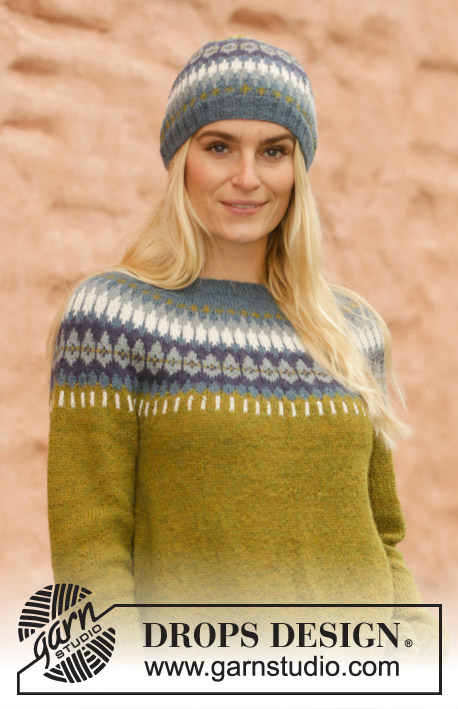 |
||||||||||||||||||
Knitted jumper in DROPS Alpaca. The piece is worked top down with round yoke and Nordic pattern on the yoke. Sizes S - XXXL. Knitted hat with Nordic pattern in DROPS Alpaca.
DROPS 207-1 |
|||||||||||||||||||
|
------------------------------------------------------- EXPLANATIONS FOR THE PATTERN: ------------------------------------------------------- INCREASE/DECREASE TIP (evenly spaced): To work out how to increase/decrease evenly, count the total number of stitches on needle (e.g. 104 stitches) and divide by the number of increases/decreases to be made (e.g. 34) = 3.1. In this example, increase by making 1 yarn over after approx. each 3rd stitch. On the next round knit the yarn overs twisted to avoid holes. When decreasing knit together approx. each 2nd and 3rd stitch. ELEVATION (back of neck): To make the jumper slightly higher at the back of the neck when working yoke you can work an elevation as described here. Skip this section if you do not want an elevation. Insert 1 marker at the beginning of the round (mid back). Start from the right side with medium petrol and knit 11-12-12-13-13-14 stitches, turn, tighten strand and purl 22-24-24-26-26-28 stitches back. Turn, tighten strand and knit 33-36-36-39-39-42 stitches, turn, tighten strand and purl 44-48-48-52-52-56 stitches back. Turn, tighten strand and knit 55-60-60-65-65-70 stitches, turn, tighten strand and purl 66-72-72-78-78-84 stitches. Turn, tighten the strand and knit 77-84-84-91-91-98 stitches, turn tighten the strand and purl 88-96-96-104-104-112 stitches. Turn tighten the strand and knit back to mid back. Then work YOKE as described in the text. PATTERN: Jumper: See diagram A.1. Choose diagram for your size. Hat: See diagram A.2. The whole pattern is worked in stocking stitch. KNITTING TIP: To avoid the knitting tension becoming tighter when working pattern it is important that the strands at the back are not tight. Use a size larger needle when working pattern if this is a problem. INCREASE TIP-1 (for sides of body): Work until there are 3 stitches left before the marker thread, make 1 yarn over, knit 6 (marker thread sits between these 6 stitches) make 1 yarn over (= 2 stitches increased at each marker thread; 4 stitches increased on round). On the next round knit the yarn overs twisted to avoid holes. Then work the new stitches in stocking stitch. DECREASE TIP (for mid under sleeve): Work until there are 3 stitches left before the marker thread, knit 2 together, knit 2 (marker thread sits between these 2 stitches), slip 1 stitch as if to knit, knit 1 and pass the slipped stitch over the knitted stitch. CASTING-OFF TIP: To avoid the cast-off edge being tight you can cast off with a larger size needle, or make 1 yarn over after approx. each 8th stitch at the same time as casting off (yarn overs cast off as normal stitches). ------------------------------------------------------- START THE PIECE HERE: ------------------------------------------------------- JUMPER – SHORT OVERVIEW OF THE PIECE: The neck and yoke are worked in the round with circular needle, top down. The yoke is divided for body and sleeves. The body is continued in the round with circular needle. The sleeves are worked in the round with short circular needle/double pointed needles, top down. NECK: Cast on 104-108-112-116-120-124 stitches with short circular needle size 3 mm and medium petrol. Knit 1 round and then work rib in the round (= knit 2 /purl 2) for 3-3-3-4-4-4 cm. When the rib is finished knit 1 round where you increase 34-36-38-40-42-44 stitches evenly spaced – read INCREASE/DECREASE TIP = 138-144-150-156-162-168 stitches. Knit 1 round (yarn overs knitted twisted). Change to circular needle size 3.5 mm. Insert 1 marker in the middle of the round (= mid front) – the yoke will be measured from this marker! Now you can work an ELEVATION in the back of the neck – read description above. If you do not want an elevation, go straight to YOKE. YOKE: Work stocking stitch in the round with medium petrol. When the piece measures 1½-1½-2-2-2-2 cm from the marker mid front, increase 34-36-40-46-48-52 stitches evenly spaced = 172-180-190-202-210-220 stitches. When the piece measures 2½-2½-3-3-3-3 cm from the marker mid front, increase 28-36-38-42-46-48 stitches evenly spaced = 200-216-228-244-256-268 stitches. When the piece measures 3-3-4-4-4-4 cm from the marker mid front, start working A.1 in the round (= 50-54-57-61-64-67 repeats of 4 stitches). Continue this pattern. Read KNITTING TIP and REMEMBER THE KNITTING TENSION! AT THE SAME TIME on each round marked with an arrow in A.1, increase stitches evenly as described below: Arrow-1: Increase 36-36-40-44-44-52 stitches evenly spaced = 236-252-268-288-300-320 stitches (there is now room for 59-63-67-72-75-80 repeats of A.1 with 4 stitches). Arrow-2: Increase 40-42-50-54-60-64 stitches evenly spaced = 276-294-318-342-360-384 stitches (there is now room for 46-49-53-57-60-64 repeats of A.1 with 6 stitches). Arrow-3: Increase 20-26-30-34-44-48 stitches evenly spaced = 296-320-348-376-404-432 stitches (there is now room for 74-80-87-94-101-108 repeats of A.1 with 4 stitches). Arrow-4: Increase 12-20-24-24-28-32 stitches evenly spaced = 308-340-372-400-432-464 stitches (there is now room for 77-85-93-100-108-116 repeats of A.1 with 4 stitches). When A.1 has been completed continue with stocking stitch and olive. AT THE SAME TIME on the first round after A.1, increase 2-6-6-10-6-14 stitches evenly spaced = 310-346-378-410-438-478 stitches. Work until the piece measures 20-22-24-25-27-29 cm from the marker on the neck. Divide the yoke for body and sleeves, working the next round with olive as follows: Work 46-51-54-60-66-73 stitches in stocking stitch (= ½ back piece), place the next 62-70-80-84-86-92 stitches on 1 thread for sleeve, cast on 8-8-10-10-12-12 new stitches on the needle (= in side under sleeve), work 93-103-109-121-133-147 stitches in stocking stitch (= front piece), place the next 62-70-80-84-86-92 stitches on 1 thread for sleeve, cast on 8-8-10-10-12-12 new stitches on the needle (= in side under sleeve) and work the remaining 47-52-55-61-67-74 stitches in stocking stitch (= ½ back piece). Body and sleeves are finished separately. THE PIECE IS NOW MEASURED FROM HERE! BODY: = 202-222-238-262-290-318 stitches. Insert 1 marker thread on each side of the body in the middle of the 8-8-10-10-12-12 stitches cast on under the sleeve. Allow the threads to follow your work onwards; they will be used when increasing in the sides. Start the round at one of the marker threads and work stocking stitch in the round with olive. When the piece measures 5 cm from the division in all sizes increase 1 stitch on each side of both marker threads – read INCREASE TIP (= 4 stitches increased). Increase like this every 5-5-5-4-4-4 cm a total of 5-5-5-6-6-6 times on each side = 222-242-258-286-314-342 stitches. Continue working until the piece measures 30 cm from the division (there is approx. 3 cm to finished length; you can try the jumper on and continue working to desired length). Knit 1 round where you increase 74-82-86-98-106-114 stitches evenly spaced = 296-324-344-384-420-456 stitches (this is done so the rib is not tight). Change to circular needle size 3 mm and work rib (= knit 2 / purl 2) for 3 cm. Cast off with knit over knit and purl over purl – read CASTING OFF TIP! The jumper measures approx. 56-58-60-62-64-66 cm from the shoulder down. SLEEVE: Place the 62-70-80-84-86-92 stitches from the thread on the one side of the piece on short circular needle/double pointed needles size 3.5 mm and knit up 1 stitch in each of the 8-8-10-10-12-12 stitches cast on under the sleeve = 70-78-90-94-98-104 stitches. Insert 1 marker thread in the middle of the 8-8-10-10-12-12 stitches and allow it to follow your work onwards; it will be used when decreasing mid under sleeve. Start the round at the marker thread and work stocking stitch in the round with olive. When the piece measures 3 cm from the division in all sizes decrease 2 stitches mid under sleeve – read DECREASE TIP. Decrease like this every 3½-2½-1½-1½-1½-1 cm a total of 10-13-19-19-19-22 times = 50-52-52-56-60-60 stitches. Continue working until the sleeve measures 37-36-35-33-32-30 cm from the division (there is approx. 7 cm to finished length; you can try the jumper on and continue working to desired length). NOTE: Shorter measurements in larger sizes due to wider neck and longer yoke. Knit 1 round where you increase 18-20-20-20-20-20 stitches evenly spaced = 68-72-72-76-80-80 stitches. Change to double pointed needles size 3 mm and work rib (= knit 2 / purl 2) for 7 cm. Cast off with knit over knit and purl over purl – remember CASTING OFF TIP. The sleeve measures approx. 44-43-42-40-39-37 cm from the division. Work the other sleeve in the same way. ------------------------------------------------------- HAT – SHORT OVERVIEW OF THE PIECE: The piece is worked in the round with short circular needle, bottom up. Change to double pointed needles when necessary. HAT: Cast on 116-120-124 stitches with circular needle size 2.5 mm and medium petrol. Knit 1 round. Then work rib in the round (= knit 2 / purl 2) for 3-4-4 cm. Change to circular needle size 3.5 mm and knit 1 round where you increase 24 stitches evenly spaced in all sizes – read INCREASE/DECREASE TIP = 140-144-148 stitches. Work A.2 in the round (= 35-36-37 repeats of 4 stitches). Continue this pattern. REMEMBER THE KNITTING TENSION! AT THE SAME TIME on each round marked with an arrow in A.2, decrease stitches evenly spaced as described below: Arrow-1: Decrease 8-6-4 stitches evenly spaced = 132-138-144 stitches. Continue the pattern (there is now room for 22-23-24 repeats of 6 stitches). Arrow-2: Decrease 24-26-28 stitches evenly spaced = 108-112-116 stitches. Continue the pattern (there is now room for 27-28-29 repeats of 4 stitches). Arrow-3: Decrease 24-24-24 stitches evenly spaced = 84-88-92 stitches. Continue the pattern (there is now room for 21-22-23 repeats of 4 stitches). When A.2 has been completed continue with olive as follows: Knit 3-3-4 rounds, * knit 1 round where all the stitches are knitted together 2 and 2, knit 5-5-6 rounds *, work from *-* 1 more time. Then knit 1 round where all the stitches are knitted together 2 and 2 = 11-11-12 stitches left. Cut the strand, pull it through the remaining stitches, tighten and fasten well. The hat measures approx. 23-24-25 cm from the top down. |
|||||||||||||||||||
Diagram explanations |
|||||||||||||||||||
|
|||||||||||||||||||
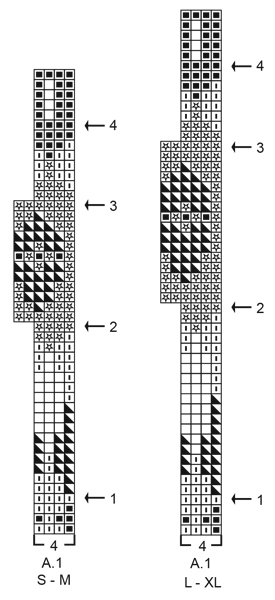
|
|||||||||||||||||||

|
|||||||||||||||||||

|
|||||||||||||||||||
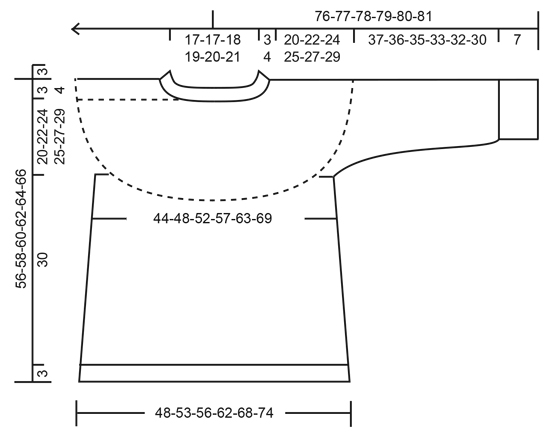
|
|||||||||||||||||||
Have you finished this pattern?Tag your pictures with #dropspattern #heimsweater or submit them to the #dropsfan gallery. Do you need help with this pattern?You'll find 27 tutorial videos, a Comments/Questions area and more by visiting the pattern on garnstudio.com. © 1982-2025 DROPS Design A/S. We reserve all rights. This document, including all its sub-sections, has copyrights. Read more about what you can do with our patterns at the bottom of each pattern on our site. |
|||||||||||||||||||

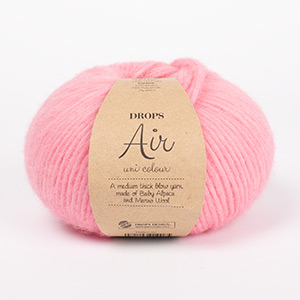





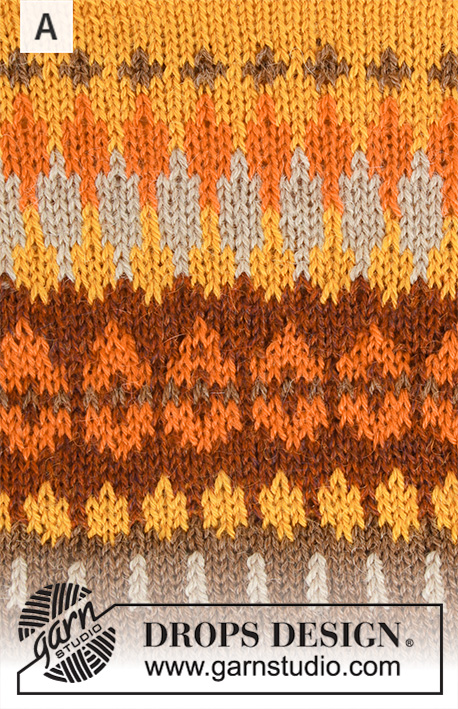
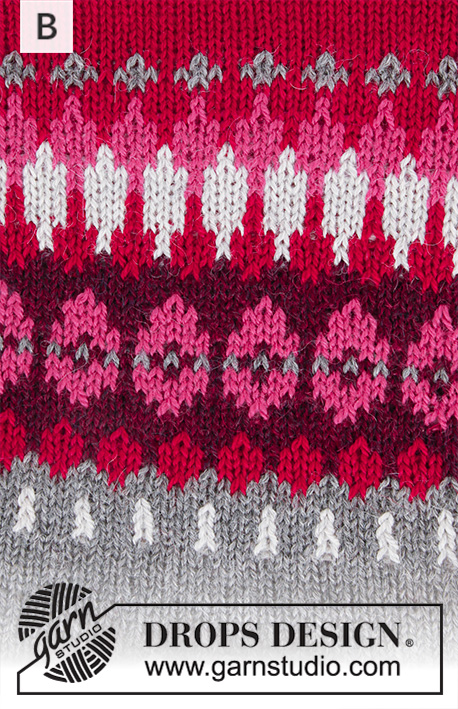
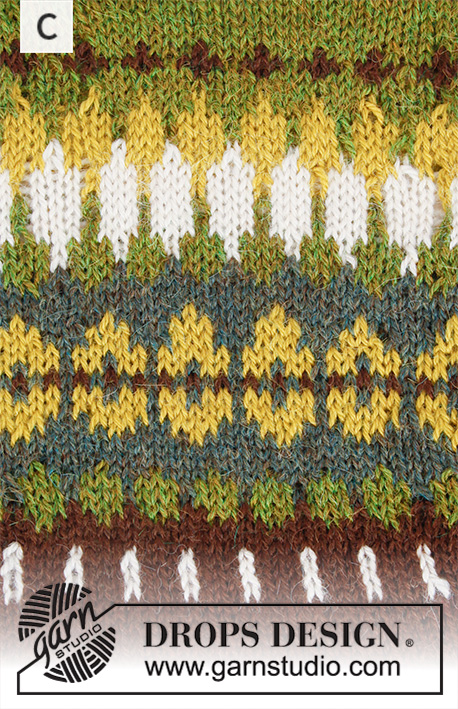

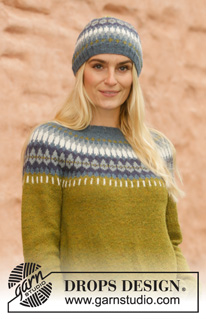
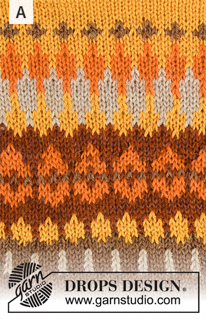
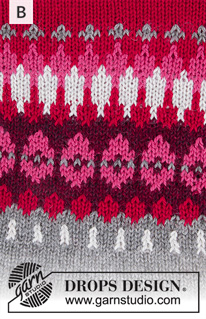
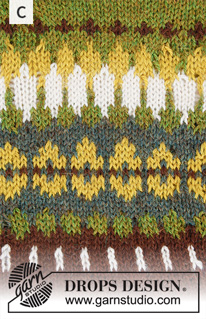






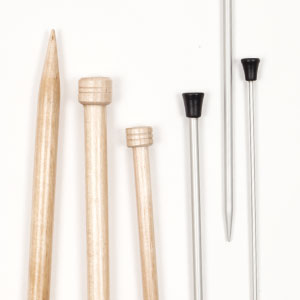
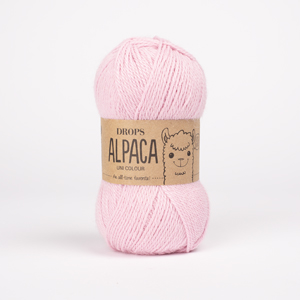
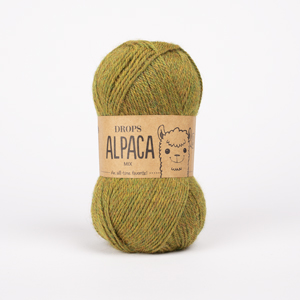
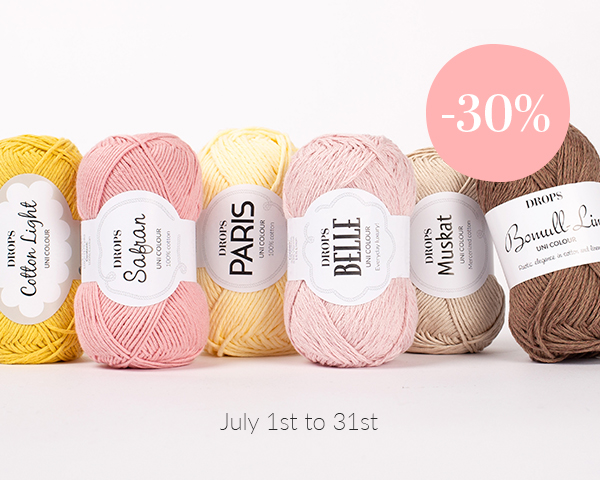
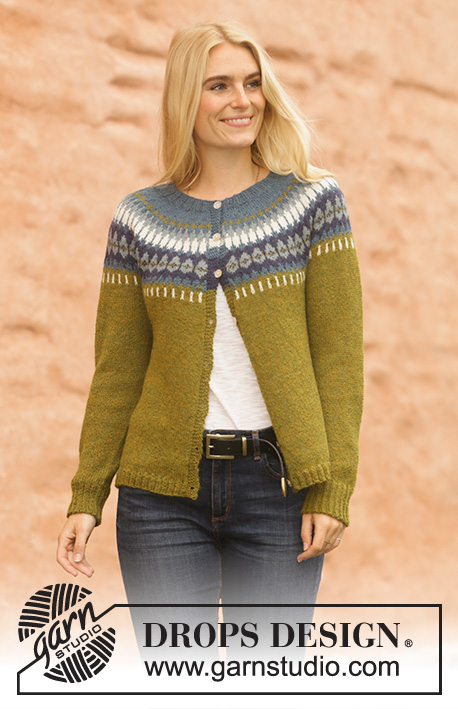
































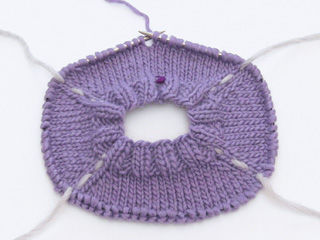
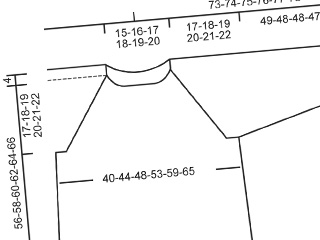
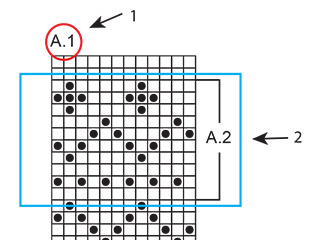
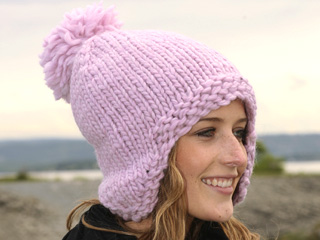
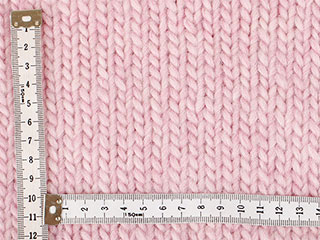
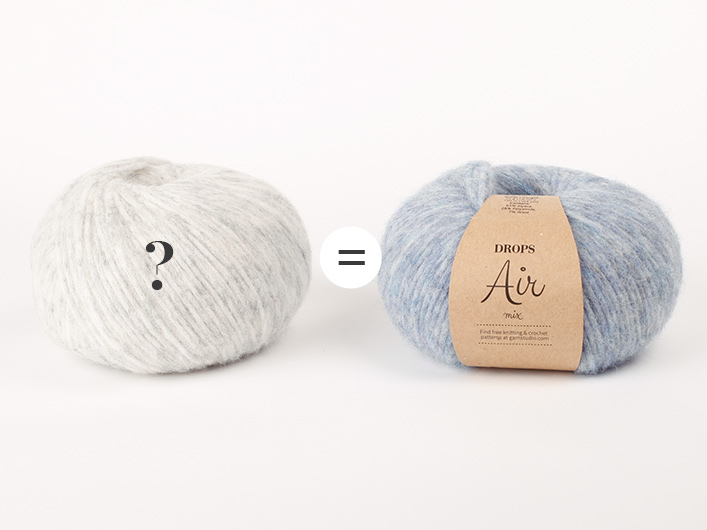
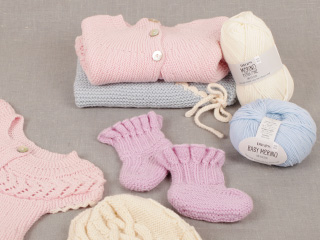
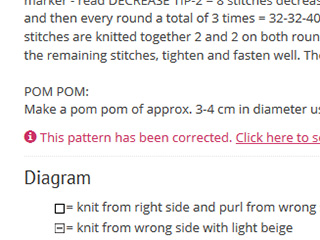
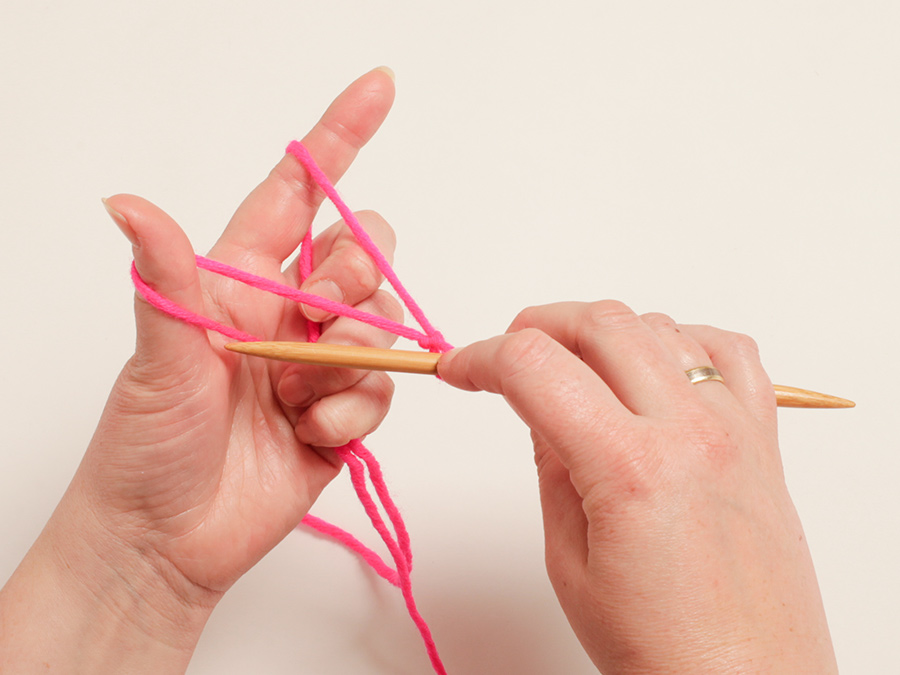
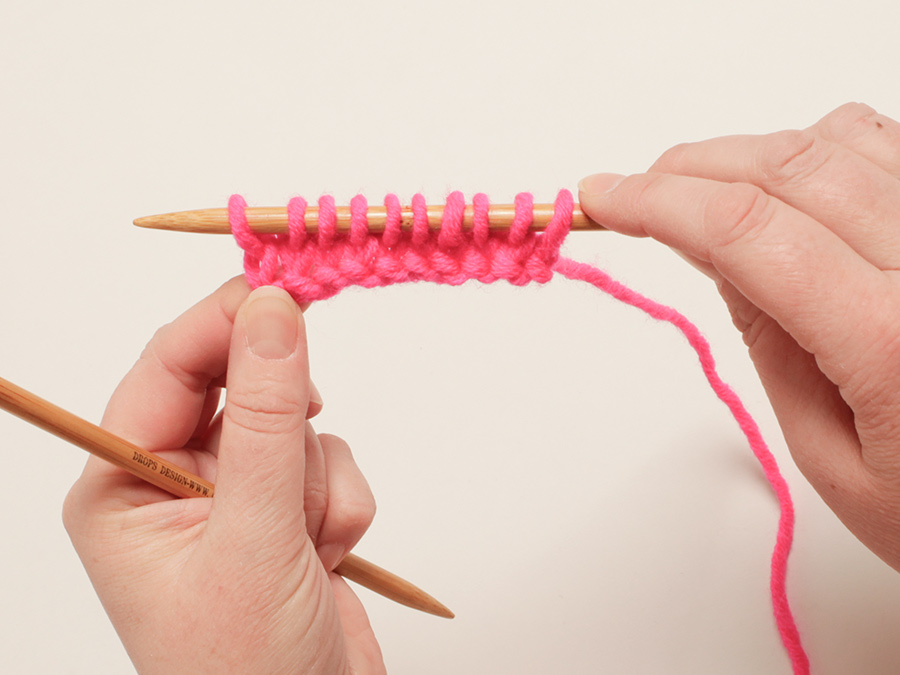
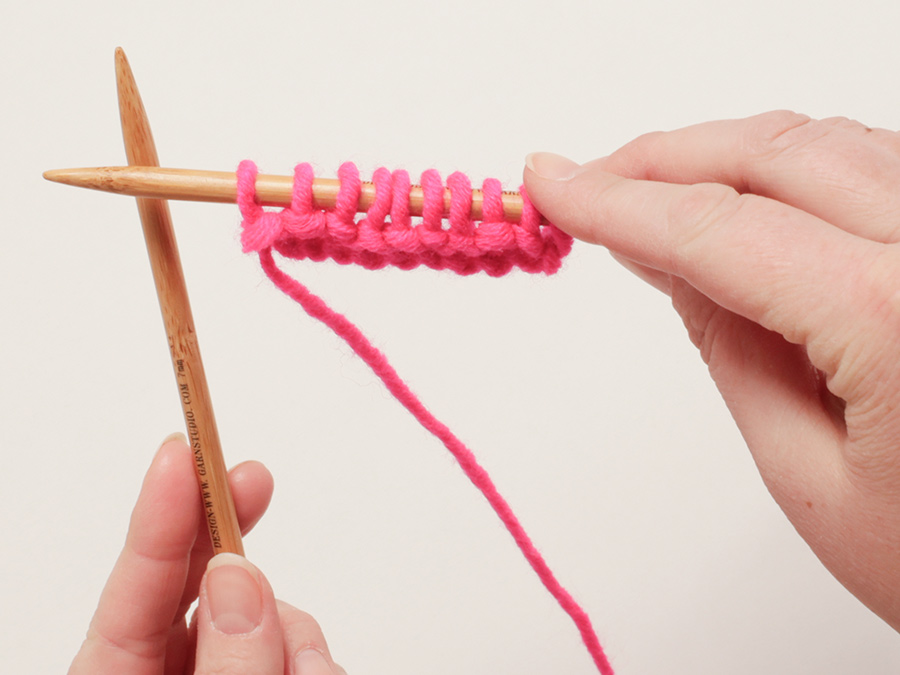
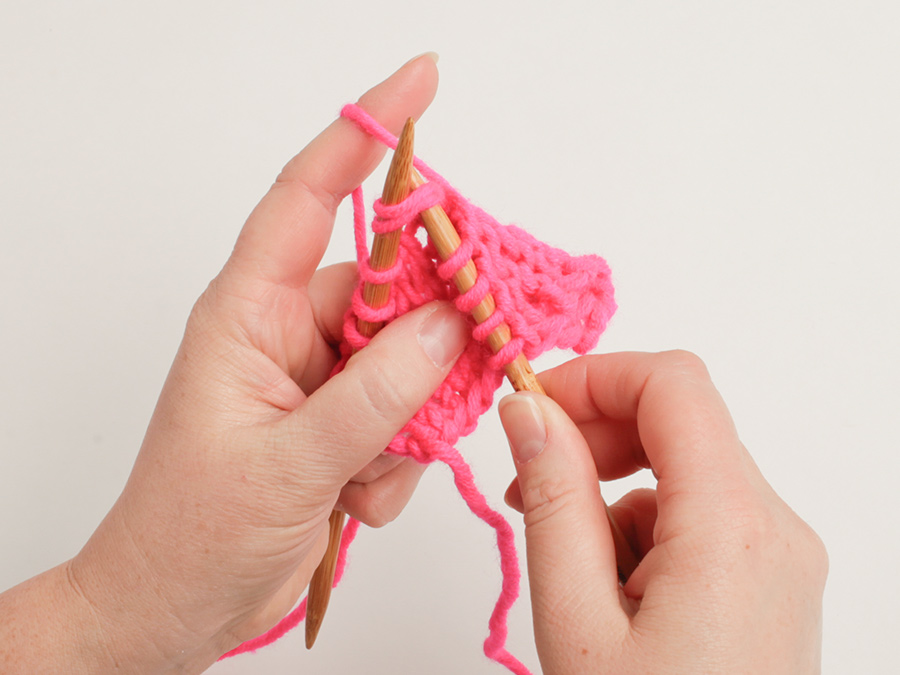
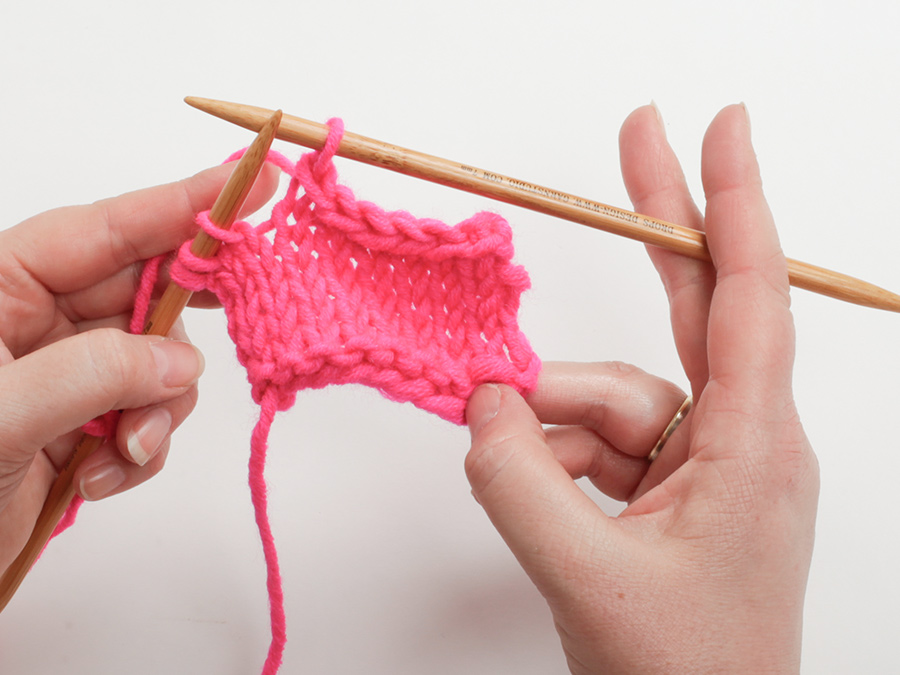
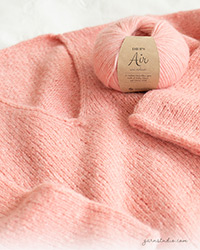
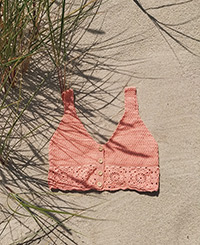
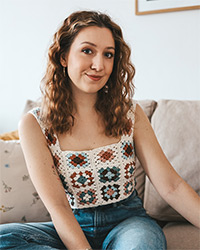
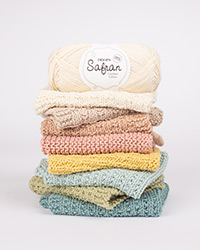
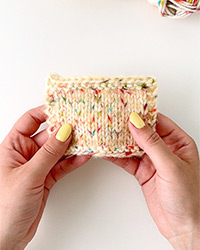
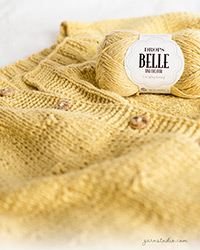
Post a comment to pattern DROPS 207-1
We would love to hear what you have to say about this pattern!
If you want to leave a question, please make sure you select the correct category in the form below, to speed up the answering process. Required fields are marked *.